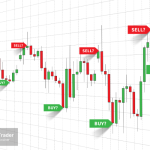[ˈvɒl.ə.taɪl]
Volatility in trading refers to the degree of fluctuation in the price of a financial asset over a given period of time.
What is Volatility (vol) in trading?
Volatility in trading refers to the amount of variation in the price of a financial asset over a specific period of time. It is a measure of how much the price of a financial asset changes over time, and is often used as an indicator of risk in trading.
High “vol” means that the price of an asset can fluctuate significantly in a short period of time, while low “vol” means that the price changes at a more gradual pace.
Traders and investors closely monitor “vol” as it can have a significant impact on their trading decisions. For example, a trader may use “vol” as a guide for setting stop-loss orders or as an indicator of potential profit or loss. Volatility can be calculated using statistical measures such as standard deviation or beta, and can be used to evaluate the risk associated with trading a particular financial asset.
Key Takeaways
- Volatility measures the degree of fluctuation in the price of a financial asset over a specific period of time.
- High “vol” means that the price of an asset can fluctuate significantly in a short period of time, while low volatility means that the price changes at a more gradual pace.
- Volatility is an important indicator of risk in trading, as assets with high volatility are generally considered riskier than assets with low “vol”.
- Traders and investors may use “vol” to make trading decisions, such as setting stop-loss orders or evaluating the potential profit or loss of a trade.
- There are several statistical measures used to calculate “vol” , such as standard deviation, beta, and implied “vol” These measures can provide valuable information for traders and investors when evaluating the risk and potential return of a trade.
Example
A stock has an average price of $50 over the course of a month. During that time, the stock's price varies from $45 to $55, which means that it has a volatility of 10%. This indicates that the stock has experienced a moderate level of price fluctuation over the period of a month.
Now let's consider another stock with an average price of $50 over the same month. This time, the stock's price ranges from $40 to $60, which represents a “vol “of 20%. This indicates that this stock has experienced a higher level of price fluctuation than the first stock.
In general, stocks with higher volatility are considered to be riskier investments than those with lower volatility, as they are subject to larger price swings in a shorter period of time.
Back to Glossary.






